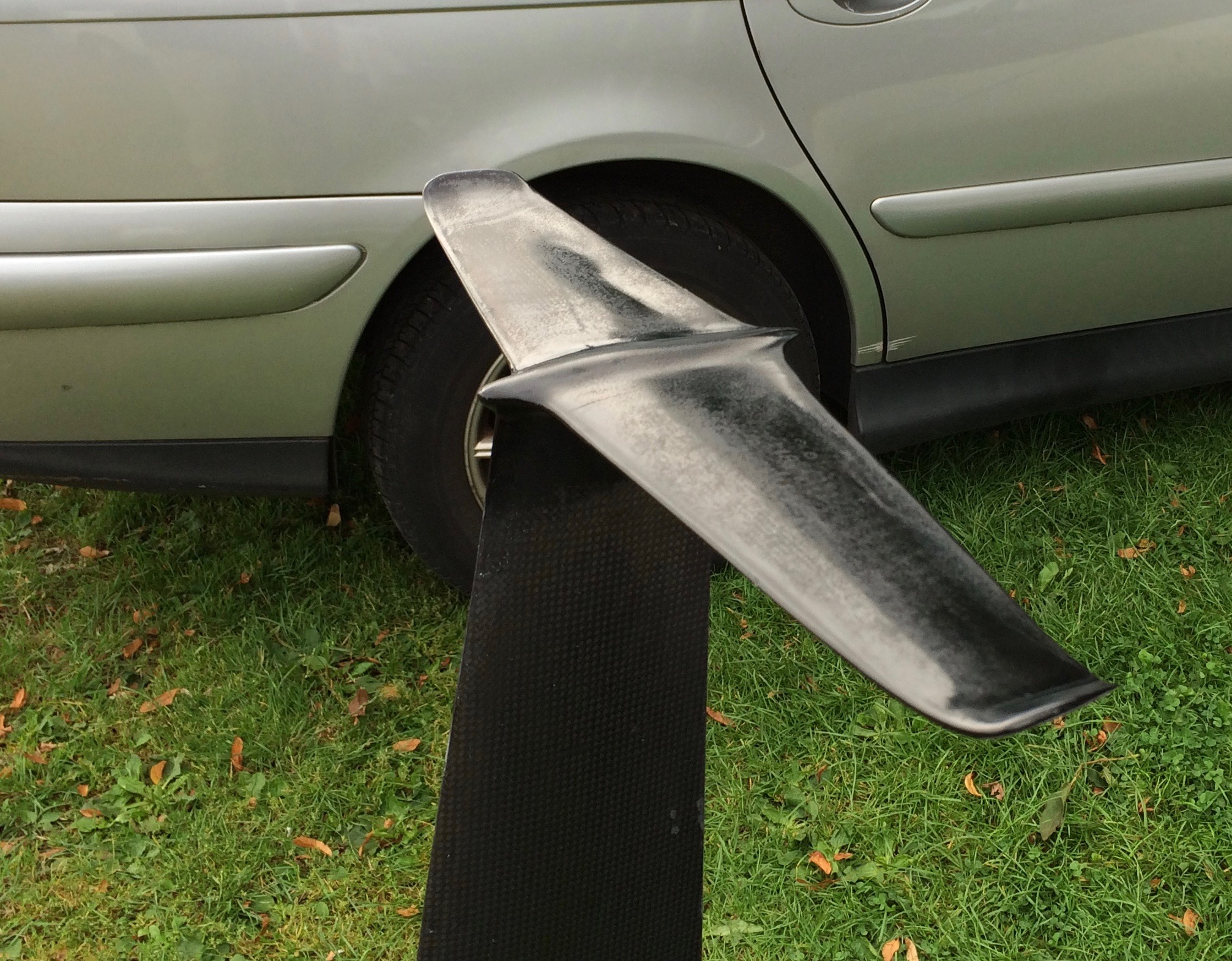Another new DNA foil position.
This weekend at Rutland Sailing Club, in central England and an area famed for Stilton cheese, pork pies and Leicester City FC incidentally, I met with Ron Price.
Ron is a senior lecturer in naval architecture at the Warsash Maritime Academy at Solent University, Southampton. He is the designer of the 5.9m Whisper T foil catamaran. You’ve probably seen it, a red thing based on stretched hull lines of a foiling Moth, with a modified A Cat type rig with a jib and claims to foil in 5 knots of wind.
Ron was up at the British ‘A’ Cat Nationals with his modified 2015 DNA. Being a self confessed ‘numbers man’ he decided to chop a new hole in his DNA and reposition the boards some 200mm or so further forward, as close to the front beam as possible, in order to improve stability. After doing so, he realized that the DNA Z boards were then too short, so he added about 70mm to the top and reskinned the whole lot. This put the board bottom hull entry point at the same place as the original board.
He made up a DNA F1 style rake mechanism with a screwthreaded actuator at the front, controlled, in this version, by two dyneema chords. The later version is planned to have a Kevlar toothed belt, a’la F1. The job was so new, that the boat was transported on foam cushions to the venue because the paint had still to fully cure!
Then he turned his attention to the rudder foils. He moulded a handed pair T foils and added a bulb at the front which extended along the underside, following the sectional contour, ending in an extended tail. This had been designed and tank tested at his University and proved to be the best Eppler section for the speed range. Winglets were also included for drag reduction.
The boat sailed very well indeed. The longer moment arm increased stability as promised and Ron was seen foiling about the lake in the usual conditions. He was seen playing with rake angles as he was flying although the boat did adopt a distinctive nose down angle due to the rudders being a little on the short side. But the modifications worked. The boat tacked normally and was well balanced both up and downwind. So, something else to play with now.
Check out the photos or drop him a line at ronald.price@solent.ac.uk where I’m sure he’d be pleased to discuss it with you.
Photos Helena Darvelid/Sailrocket, Jodie Bawden and Gordon Upton








